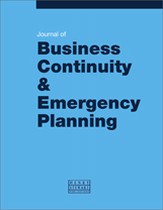Does integration matter? A holistic model for building community resilience in Pakistan
Abstract
This paper analyses an integrated communitybased risk reduction model adopted by the Pakistan Red Crescent. The paper analyses the model’s constructs and definitions, and provides a conceptual framework and a set of practical recommendations for building community resilience. The study uses the process of outcome-based resilience index to assess the effectiveness of the approach. The results indicate that the integrated programming approach is an effective way to build community resilience as it offers a number of tangible and longlasting benefits, including effective and efficient service delivery, local ownership, sustainability of results, and improved local resilience with respect to the shock and stress associated with disaster. The paper also outlines a set of recommendations for the effective and efficient use of the model for building community resilience in Pakistan.
The full article is available to subscribers to the journal.
Author's Biography
Shesh Kanta Kafle is a disaster and development practitioner with over 20 years of experience in disaster risk reduction (DRR) and development programmes. His research is focused on community-based DRR approaches, flood risk management, community resilience, forest fire studies and disaster governance, and his books include Community Based Disaster Risk Reduction for Local Authorities and Disaster Risk Reduction: Case Studies from Asia. As a researcher, he has worked for the International Development Research Centre, and Disaster and Climate Change Study Centre, while as a practitioner, he has worked for United Nations Development Programme, the Asian Disaster Preparedness Centre, and for various Red Cross and Red Crescent societies internationally.
Citation
Kanta Kafle, Shesh (2017, September 1). Does integration matter? A holistic model for building community resilience in Pakistan. In the Journal of Business Continuity & Emergency Planning, Volume 11, Issue 1. https://doi.org/10.69554/UYXY6163.Publications LLP
